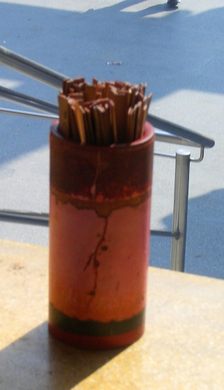Wong Tai Sin Temple
Taoism, Buddhist and Confucianism are all represented in this temple that claims to answer anyone's wishes.
Wong Tai Sin Temple is known for answering prayers and wishes with the practice of Kau Cim, a form of fortune telling that originated in China.
The beautifully ornamented temple is dedicated to the Taoist deity, Wong Tai Sin, a shepherd boy born in Zhejiang Province on the eastern coast of mainland China in the 4th century. According to legend he began practising Taoism at the age of 15 after meeting an immortal on Heng Shan (Red Pine Hill) in his hometown. The saintly person taught him the art of refining cinnabar into a medicine believed to cure all illnesses. After spending 40 years in seclusion learning this art, he achieved enlightenment and became immortal.
Legend holds that Wong Tai Sin could punish the evil, heal the wounded, rescue the dying, see the future, and make wishes come true.
Originally a private shrine for Taoists, in 1934 the Wong Tai Sin temple was opened to the public for the Lunar New Year. The temple survived the wide destruction of Hong Kong during the Japanese Occupation in WWII, which was attributed to Wong Tai Sin’s powers. In 1956, with government approval, the shrine was opened to the public year-round.
The huge shrine includes many halls and altars, and though it is primarily a Taoist temple, the shrine also has Buddhist and Confucian worshipping halls. A portrait of Wong Tai Sin stands in the middle of the Main Altar backdropped by wooden sculptures that depict the story of how Wong Tai Sin became a deity. Taoist as well as Buddhist and Confucian scriptures and images are engraved on the walls.
The large open space in front of the Main Altar is the main worshipping place. Here worshippers hold bundles of burning incense and bow to Wong Tai Sin three times and then shake fortune sticks until one falls out. The stick is exchanged for a piece of paper with the corresponding number for interpretation by the fortune tellers. The secondary platform contains bronze statues of the 12 Zodiac Animals.
Another interesting feature are the five buildings and structures, arranged in a row, representing the five elements in fung shui: the Bronze Pavilion (metal); the Archives Hall (wood); the Yuk Yik Fountain (water); the Yue Hung Shrine (fire), where the Buddha of the Lighting Lamp is worshipped; and the Earth Wall (earth). Located at the rear of the complex is Good Wish Garden, Chinese-style garden which features a miniature replica of the Summer Palace in Beijing, the replica of the Nine Dragon mural in Pei Hai Park in the Forbidden City in Beijing, and a white jade statue of sheep, depicting the miracle of Wong Tai Sin transforming piles of white boulders into sheep.
























Follow us on Twitter to get the latest on the world's hidden wonders.
Like us on Facebook to get the latest on the world's hidden wonders.
Follow us on Twitter Like us on Facebook